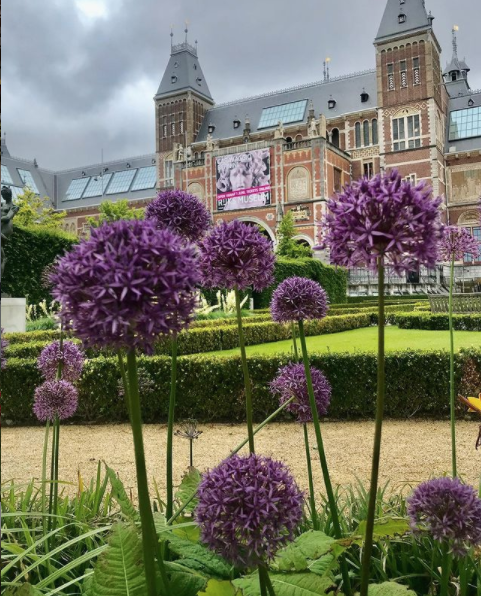The major exhibition – curated by Dutch and Indonesian curators – offers an international perspective on the struggle for independence of Indonesia from the Dutch Colonial Empire during the 1945-1949 period.
After more than three centuries of colonial occupation by the Netherlands, in 1945 Indonesia proclaims itself an independent country. From that moment, the struggle for autonomy runs on for over four years. Indonesia becomes a member of the United Nations in 1950, whereby the international confirmation of its independence is a fact. Today the country counts about 270 million inhabitants and consists of more than 17,000 islands.
The focus is on people who experienced the revolution at close quarters: fighters, artists, diplomats, politicians, journalists and others. Their individual experiences reflect a history with many faces and many voices. This is the first major exhibition devoted to the subject in a major European museum and complements Rijksmuseum’s landmark 2020 exhibition Slavery.
The Indonesian revolution had an important part to play in 20th-century world history, with Indonesia being one of the trailblazers on the road to decolonization and independence after the Second World War. Many countries would follow in the next two decades.
The more than 200 objects on display – with loans from Australia, Belgium, United Kingdom, Indonesia and the Netherlands – are witnesses to this turbulent past. From privately-owned keepsakes to paintings loaned out for the first time by Indonesian art collections.
The exhibition includes photographs and documents such as posters and pamphlets that were confiscated by Dutch military intelligence agencies in this period. We are able to exhibit this historical material for the first time through a partnership with The National Archives of the Netherlands.
The Spirit of Revolution and Struggle
Revolusi! begins with Sukarno’s declaration of Indonesian independence on 17 August 1945. The closing chord is Sukarno’s triumphant return to the country on 28 December 1949, the day after the transfer of sovereignty by the Dutch. The exhibition focuses on the period between these two events, on the spirit of the revolution and struggle for the future of Indonesia. It explores subjects such as nationalism, youth, anti-colonialism, art, war and diplomacy, propaganda, renewal, the information war and refugees. The thread running through the exhibition is its focus on the experiences of 20 individuals – each at a different location, and each with their own background and political standpoint.
Artists in the Revolution
The revolution was a period of experimentation and creativity for Indonesian nationalists. Artists, in conjunction with politicians, formed a modern revolutionary vanguard. Paintings hung in government buildings to represent the Indonesian revolution. The streets were alive with posters, graffiti and pamphlets. Art served as a political instrument to propagate Indonesian independence at home and abroad. Politically engaged Indonesian artists depicted subjects such as comradeship, leadership, armed combat, the fervour of youth, and militancy. This joint effort by the people of Indonesia established the defining image of the revolution. In the exhibition works are on display by Trubus Soedarsono, Sudjojono, Otto Djaya, Basoeki Abdullah, Hendra Gunawan, Affandi en Henk Ngantung.
Contemporary Art Commission
Commissioned by the Rijksmuseum Yogyakarta-based artist Timoteus Anggawan Kusno (b. 1989) is making an artwork especially for the exhibition consisting of objects in the Rijksmuseum collection whose origins can be traced to the colonial period, evoking and giving voice to the decades-long resistance that preceded the Indonesian revolution and the consequences of the colonial experience in today’s world.
Loans
Loans have also been committed by ao Affandi Museum Yogyakarta, Galeri Nasional of Indonesia, Jakarta Art Council, Museum Seni Rupa Jakarta, Museum Komunikasi dan Informatika Jakarta, Museum Universtas Pelita Harapan Tangerang, Imperial War Museum London, National Library of Australia, Tropenmuseum Amsterdam, University Library Leiden, Museum Bronbeek Arnhem, The National Archives of the Netherlands, Internationaal Instituut voor Sociale Geschiedenis Amsterdam, Nationaal Museum voor Wereldculturen, Nationaal Militair Museum, and private collections and families.
Online Exhibition
For visitors interested in more in-depth insights, and for people who are unable to come to the museum in person, there will also be an online version of Revolusi! An interactive world map will introduce visitors to ten eyewitnesses and their stories, told through objects, photos and film excerpts.
PROGRAMME ACCOMPANYING THE EXHIBTION: SELECTED EVENTS AVAILBLE IN ENGELISH
This programme of events and activities is being run though a partnership with the programmers Sadiah Boonstra and Maria Rey-Lamslag and the venues. Made possible in part by vfonds and DutchCulture. Subject to Covid regulations.
11 February to 5 June 2022
